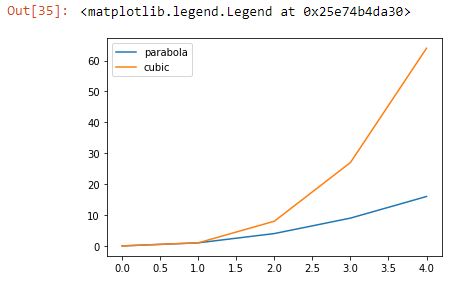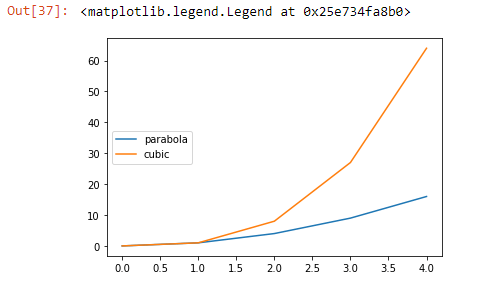Adding Legends in Line Graphs Using Matplotlib
By Hemanta Sundaray on 2022-03-28
When we have multiple lines on a single graph we can label them by using the command plt.legend().
The legend method takes a list with the labels to display. So, for example, we can call:
plt.plot([0, 1, 2, 3, 4], [0, 1, 4, 9, 16])
plt.plot([0, 1, 2, 3, 4], [0, 1, 8, 27, 64])
plt.legend(['parabola', 'cubic'])This would display a legend on our graph, labeling each line:
plt.legend() can also take a keyword argument loc, which will position the legend on the figure.
These are the position values loc accepts:
0-best, 1-upper right, 2-upper left, 3-lower left, 4-lower right, 5-right, 6-center left, 7-center right, 8-lower center, 9-upper center, 10-center
Note: If you decide not to set a value for
loc, it will default to choosing the best location. For, example, we can callplt.legend()and setlocto 6:
plt.legend(['parabola', 'cubic'], loc=6)
plt.show()which would move the legend to the left side of the graph:
Sometimes, it’s easier to label each line as we create it.
If we want, we can use the keyword label inside of plt.plot(). If we choose to do this, we don’t pass any labels into plt.legend(). For example:
plt.plot([0, 1, 2, 3, 4], [0, 1, 4, 9, 16],
label="parabola")
plt.plot([0, 1, 2, 3, 4], [0, 1, 8, 27, 64],
label="cubic")
plt.legend() # Still need this command!This would display a legend that looks just like what we had before:

